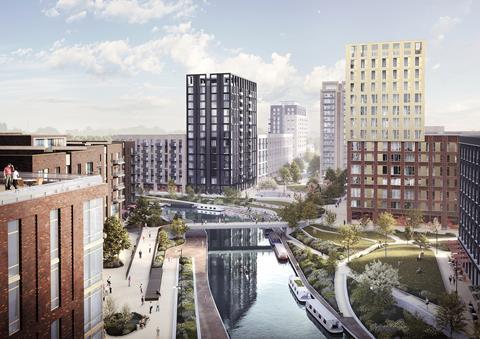On 1 May, a 12-week Department for Communities and Local Government consultation on build-to-rent (BTR) closes.

The consultation sends a strong signal that this government is prepared to get behind the nascent BTR sector, with a host of legislative options and changes to the planning system on the table. The industry is being invited, along with other interested parties, to provide Whitehall policymakers with the benefit of its expertise.
The government’s housing white paper last month set out the broader strategy to “fix our broken housing market”. Primarily, it acknowledges the sheer scale of the national housing supply crisis, while admitting the decline has been overseen by successive governments.
It concludes that it is finally time to grasp this pernicious nettle to avoid further erosion of housing choices and, by extension, damage to wider society and the economy as a whole.
Crucially, it seeks diversity in housing supply - encouraging “new and different providers”, rather than continuing the previous, almost exclusive, focus on home ownership.
This is supported by a detailed consultation paper on BTR, a unique opportunity for the sector to embed itself in housing policy.

Trends in demographics, household formation and increasingly flexible career and working patterns suggest a need for more housing of all types. Supply solutions are various - it is not an either/or issue. Rental housing has always been a significant component but has become the fragmented outcome of properties originally intended for owner-occupation.
The results for tenants have been unpredictable, inconsistent and unsatisfactory in many cases. The provision of better rental outcomes for residents is an obvious and appealing option. International evidence indicates an expanding range of people who are increasingly likely to view longer-term, quality rental living as a positive choice.
Improving rental experiences
As an active player in the UK’s emerging BTR sector, I welcome the government’s support of the market’s distinct characteristics. There is reference to the growth of ‘multi-family’ housing over the past three decades, a global asset class in which Greystar is now the largest operator.
The consultation seeks to improve rental experiences and there are clear synergies with London’s recently published draft supplementary planning guidance. Purpose-designed rental developments in single ownership allow for unified professional on-site management and maintenance, enabling the provision of shared amenities and the faster creation of communities.
BTR operators have a natural inclination to encourage residents to stay long term and will offer secure and predictable tenancy arrangements as a result, which benefits everybody.

Affordable private rent is proposed as the most appropriate form of affordable housing for BTR - fully integrated under the same management and typically tenure-blind. The measure of success will be how quickly new viability processes bed in, which will in turn rely on how local planning authorities adapt to different affordable housing expectations.
BTR has huge potential to add to housing supply, usually with an ambition to deliver at scale and at speed in a way that complements other tenure types and provides greater choice. The proposals encourage the growth of the sector within the national housing spectrum and provide a positive policy trajectory.
This is long overdue. I urge all interested participants to respond to the consultation to make the updated planning environment as practical as possible and to reflect the sector’s long-term approach.






























1 Readers' comment